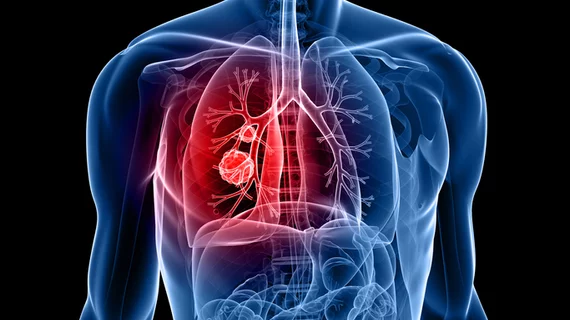Radiologists should include radiation oncologists in multidisciplinary workup for pulmonary nodules
Radiologists and other physicians should strive to include radiation oncologists in the multidisciplinary workup and management of pulmonary nodules, according to research published in JAMA Network Open.
Such specialists have typically been left out of these conversations. However, Harvard-affiliated Massachusetts General Hospital begun including radiation oncologists as part of its pulmonary nodule and lung cancer screening clinic in 2015. After the change, the proportion of patients receiving stereotactic body radiotherapy rather than surgical resection leapt from less than 7% to nearly 33%.
Mass General experts believe their prospective study underlines these physicians’ importance in such instances.
“As the number of patients with screen-detected or incidental pulmonary nodules continues to increase, multidisciplinary evaluation has become a widely recommend measure to ensure effective care for patients with pulmonary nodules,” study co-author Jo-Anne Shepard, MD, a professor of radiology and director of the Boston-based institution’s Thoracic Imaging and Intervention Division, and colleagues wrote March 31. “Although multidisciplinary teams have commonly included thoracic radiologists, pulmonologists, and thoracic surgeons, our experience demonstrates the critical role of radiation oncologists in workup and management of pulmonary nodules.”
Shepard et al. conducted their study between 2012 to 2019, with referrals based on CT with Lung-RADS category 4 findings or an incidental nodule measuring 6 mm or larger. The final tally included 1,150 patients, with Mass General providers detecting 20% of nodules via screening and the other 80% incidentally. Out of the study population, 237 received treatment for early-stage lung cancer, including about 30% who underwent radiation therapy. And among those with screening-detected lung nodules, 24% received this treatment response.
Treatment with stereotactic body radiotherapy was well-tolerated, but SBRT’s effectiveness is already established, one expert noted in a corresponding editorial. The “key finding,” however, is the marked shift to radiotherapy after RO experts joined the team.
“These data do not suggest a rogue takeover of a thoracic multidisciplinary clinic by radiation oncologists during the last decade but, instead, illustrate the modern reality of the clinical management of early-stage [non–small cell lung cancer], wherein up to one-third of patients cannot undergo surgery because of lower pulmonary function, low cardiovascular fitness, and/or advanced age or because they refuse surgery, and as such, the surgical paradigm may not fit a significant proportion of this cancer population,” Nils Arvold, MD, with St. Luke’s Hospital’s Division of Radiation Oncology in Duluth, Minnesota, wrote March 31. “Fortunately, SBRT has now progressed to the point where it can fill this gap as a lung-conserving, effective option for these patients with poorer health status,” he added later.

